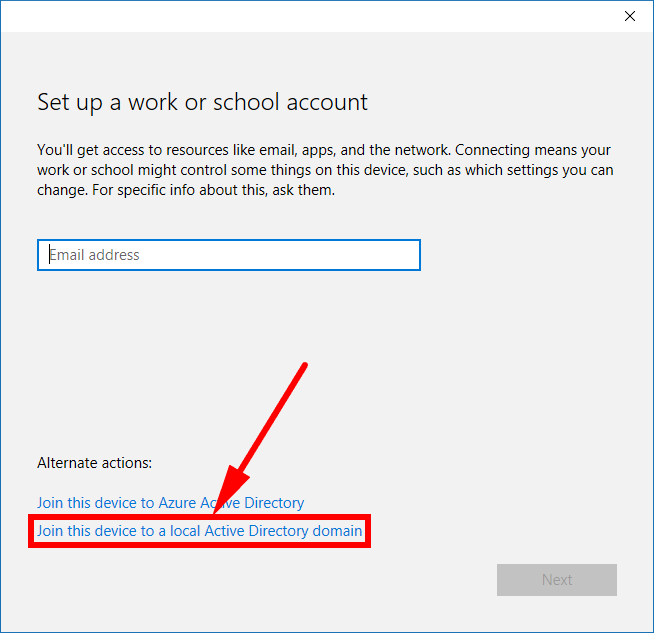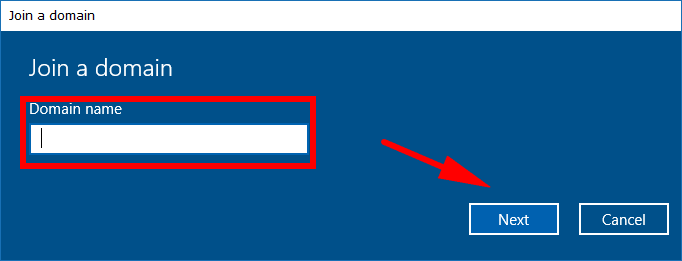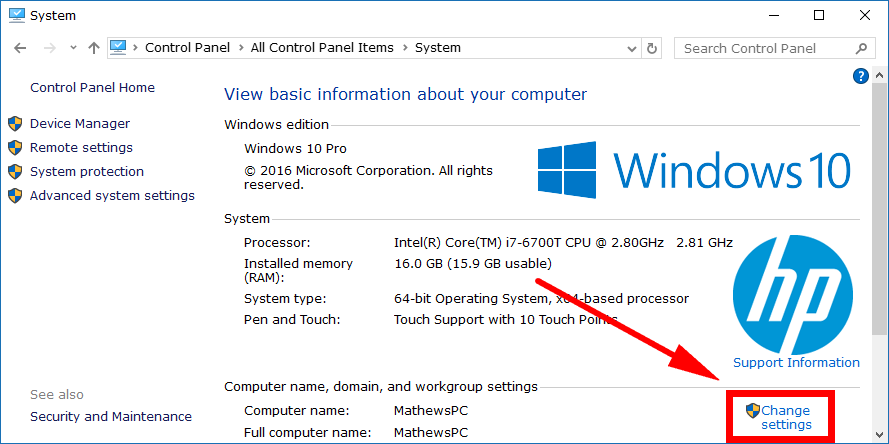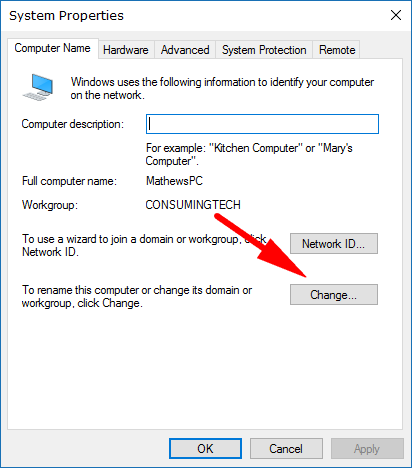Last Updated on December 26, 2022 by Mathew Diekhake
Local Active Directory Domains are commonly used in the workplace or schools. A group of computers all connected to the same network on a domain gives administration access all computers from a single computer. That single computer that can roam anywhere in the network is called a server.
The domain allows for single user login for any computer on the network and no matter what computer you are in front of at the time. The administrator of the network gets to control what permissions regular users have when they use their accounts. That will dictate whether a user can also use another computer on the network or not.
Domain Controller
You’ll need to have a domain controller set up before you can connect to that domain. All versions of Windows operating systems have a directory that resides on computers that are configured as domain controllers. You’ll need to know the name of the domain that you are trying to join before you can connect to that Active Directory. Additionally, you’ll need to have the name and password that’s associated with your user account. That password and name is created by the domain administrator and has nothing to do with your standard user account details like logging in to Windows 10 with your Microsoft account.
Active Directory
The Active Directory is a term used by Microsoft that describes any Microsoft network that is built on the typical network model that involves a client and a server. The idea is to offer a centralized server called a Domain Controller, otherwise known as “DC” for short. The Domain Controller is then responsible for authenticating the entire network. That means you don’t just log in to a local computer like you might have to read this article. Instead, you log in with authentication to the DC.
How to Join Windows 10 PC to Local Active Directory Domain Settings
You can join your Windows 10 computer to the Local Active Directory Domain by using the Settings application in Windows 10. To get started, head to the Start menu > Settings in the Start menu’s left pane and then click on the “Accounts” link from the Windows Settings screen. Once you’re in Accounts, click on the “Access work or school” in the left pane and then click on the “Connect” button available in the right side pane just under where it offers you the Connect to work or school heading.
It’ll then direct you to where you can set up a work or school account. Click on the “Join this device to a local Active Directory domain” at the bottom of the window.
Another window then opens for you to give the domain name. You’ll need to be given that domain name by the domain administrator. When you’ve entered it into the available field, click on the “next” button to continue.
How to Join Windows 10 PC to Local Active Directory Domain Control Panel
You can also get your Windows 10 PC joined to the Local Active Directory Domain by using the Control Panel. To do it this way, open up the Control Panel, so it’s showing you the classic view that has the smaller icons from the list of all Control Panel items and then click on the “System” link. Once inside, click on the “Change settings” link that’s on offer in the bottom right corner of the window.
It opens up directly to the System Properties dialog box. Keep it on the “Computer Name” tab and click on the “Change” button that is available next to where it says “To rename this computer or change its domain.”
It’s probably set on “Workgroup” at the moment. All you need to do is click on the “Domain” option instead so the checkmark moves over to the domain. You’ll need to give the name of the domain in the available field next to the checkbox also. That’s the same domain name that your domain administrator needs to give you.
The Active Directory should now be connected. Everything else is then controlled by the administrator of the network. They’ll decide on what you can and cannot do on your computer.
Related Tutorials







January 16, 2019 @ 17:42
I am reading some people say that you need to have Windows 10 Home to use domains and then other people saying that you need to have Windows 10 Pro or Windows 10 Enterprise to use domains. Can anyone confirm which one it says?
My computer is running on Windows 10 Pro and I can’t see this feature and I am logged into the administrator’s account. It’s a one account PC owned by me so there’s no question I’m signed into the administrator’s account.
I find it hard to believe that Windows 10 Pro doesn’t have a feature that Windows 10 Home does have. What sense would that make? Surely the Pro version you pay extra money for comes with all the same features as Home and then some additional features.
January 16, 2019 @ 17:47
In addition to having Windows 10 Pro or Enterprise, you need to have your computer connected to a network that is running Windows Server Edition. That is the only way you can use Active Directory domains.
January 16, 2019 @ 17:32
I am able to log in to the domain and get all the features to work but it says that I am logged in using a temporary profile when I have intended to log in with my usual account. Does anyone know anything about this?
January 16, 2019 @ 17:28
My computer started off running on Windows 10 Home and I updated it from the Settings application > Microsoft Store > Followed the rest of the guidelines to get up and running on Windows 10 Pro. When Pro finished getting installed, which happened pretty quickly, it says I’m now running on Win 10 Pro from the About menu in the Settings but I cannot see any domain button like it should be shown in the screenshots above. Any ideas?
January 16, 2019 @ 17:30
Are you signed in to the computer using an Administrators account? You’ll need to be signed in as an administrator. All features should be there as soon as the upgrade to Windows 10 Pro has completed. If you still need help, type “Get help” into the Search box in the taskbar and talk to a Microsoft representative.
Your computer should also be on a network running Windows Server edition.
January 16, 2019 @ 17:14
I couldn’t get my computer to work by connecting to the Active Directory domain automatically but I did manage to find out about a workaround.
Forget about the automatic options and instead change it to manually enter the server’s DNS address.
To do that, head to the IPv4 connection > Properties > turn off “automatically accept DNS address.”
You can then manually enter the server’s DNS address, and once you do you don’t have to do anything else. The connection will work immediately.
Once I had the connection working, I followed the same steps and enabled the option that I previously turned off (automatically accept DNS address) and it continued to work automatically the following times.